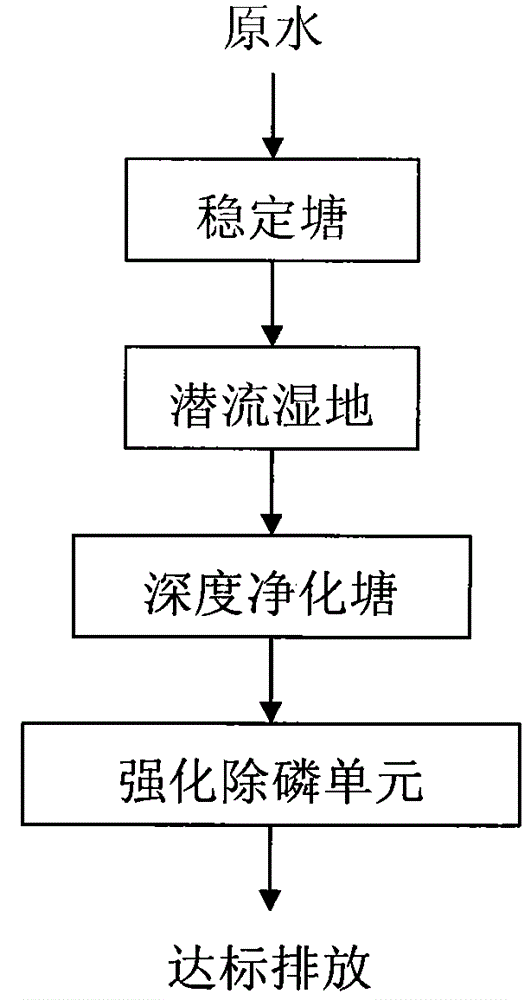Nitrogen and phosphorus removal constructed wetland process technology
A technology of artificial wetland and process technology, which is applied in aerobic and anaerobic process treatment, sustainable biological treatment, water/sludge/sewage treatment, etc., can solve the problem of low nitrogen removal rate, achieve biodegradability, The effect of reducing the risk of clogging
- Summary
- Abstract
- Description
- Claims
- Application Information
AI Technical Summary
Problems solved by technology
Method used
Image
Examples
Embodiment Construction
[0013] by figure 2 For example, the sewage first enters the stabilization pond ①, the depth is 2-3m, and artificial aquatic plants can be laid in the pond , to provide attachment points for microorganisms to form biofilms; in order to achieve better treatment effects, the water distribution method is best to use top water inlet and bottom water outlet. In the stabilization pond ①, part of the organic nitrogen is converted into ammonia nitrogen, and the macromolecular organic matter is hydrolyzed into small molecular organic matter. The suspended solids are removed to a certain extent, which greatly improves the stability and treatment efficiency of the subsequent system.
[0014] The effluent from the stabilization pond ① enters the subsurface flow wetland ②. The subsurface flow wetland ② can be in the form of vertical flow or horizontal flow, depending on the specific project. This part of the technology is relatively mature, and its main function is to remove COD in sewage...
PUM
 Login to View More
Login to View More Abstract
Description
Claims
Application Information
 Login to View More
Login to View More - R&D
- Intellectual Property
- Life Sciences
- Materials
- Tech Scout
- Unparalleled Data Quality
- Higher Quality Content
- 60% Fewer Hallucinations
Browse by: Latest US Patents, China's latest patents, Technical Efficacy Thesaurus, Application Domain, Technology Topic, Popular Technical Reports.
© 2025 PatSnap. All rights reserved.Legal|Privacy policy|Modern Slavery Act Transparency Statement|Sitemap|About US| Contact US: help@patsnap.com


